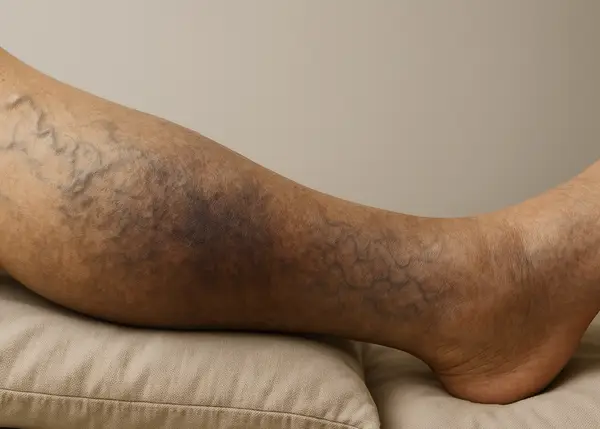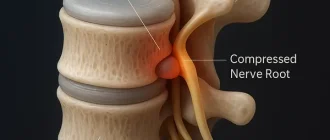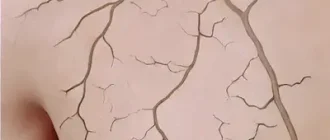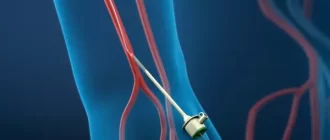Chronic Venous Insufficiency (CVI) is a progressive condition where the veins in the legs struggle to return blood to the heart, often due to damaged valves. Over time, this leads to pooling of blood, swelling, varicose veins, skin discoloration, and in severe cases, venous ulcers. CVI affects an estimated 6–7 million people in the U.S. alone, with higher prevalence in individuals over 50 and those with sedentary lifestyles or obesity.
Top Home Remedies Used for CVI Relief in 2024
This chart presents the most popular home remedies used by individuals with Chronic Venous Insufficiency (CVI) in 2024. Compression stockings remain the top choice, while lifestyle habits like leg elevation and walking also show strong adoption. Less common methods include cold showers, herbal supplements, and massage therapy.
This condition doesn’t just affect physical health — it can dramatically reduce quality of life. Patients may experience chronic pain, difficulty walking, restless legs at night, and emotional stress due to visible leg changes or the fear of worsening symptoms.
What Causes CVI?
CVI is most commonly caused by:
- Prolonged standing or sitting (especially in work environments like retail or office jobs). For example, a grocery store cashier standing for 8–10 hours per shift, or a software developer sitting at a desk without breaks, are both at higher risk.
- Obesity, which adds extra pressure on leg veins. A 45-year-old man in Chicago with a BMI over 35 noticed swelling and heaviness in his legs after walking short distances.
- Pregnancy, due to hormonal changes and increased blood volume. Many women report varicose veins developing during the third trimester and continuing postpartum, especially after multiple pregnancies.
- Family history of vein disorders (yes, those genetics count). A woman in her 30s with no lifestyle risk factors but a strong family history still developed CVI symptoms.
- Deep vein thrombosis (DVT), which damages vein valves. A man recovering from a long-haul flight developed DVT in his left leg, which progressed into chronic vein issues within a year.
- Lack of physical activity, leading to poor circulation. Remote workers who rarely leave their desks for breaks or retirees with limited mobility often report leg fatigue and swelling.
Let’s be honest — this is one of those conditions that creeps up quietly until your legs scream for help. But thankfully, it’s not without options.
Can CVI Be Managed at Home?
Yes — while CVI is a chronic condition and may require medical intervention, several home remedies can significantly reduce symptoms and improve quality of life. These at-home strategies work best when started early and practiced consistently. However, these approaches should complement — not replace — professional medical advice and treatment.
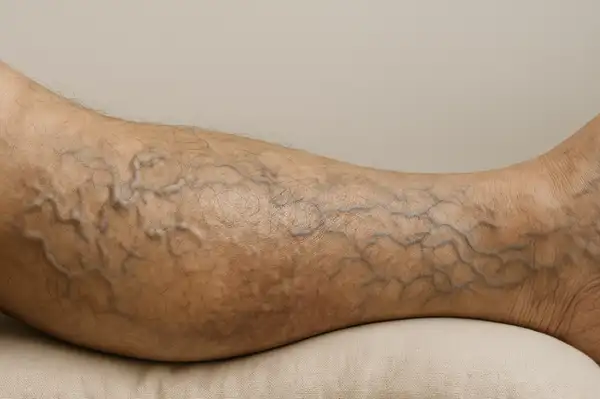
Top Home Remedies That Actually Make a Difference
1. Compression Therapy
Wearing compression stockings is the #1 at-home treatment recommended by specialists. These specially designed socks apply consistent pressure to the legs, helping veins push blood back up toward the heart.
- Effectiveness: 8.5/10
- Average cost: $30–$100 per pair (prescription-grade can be higher)
- What’s required: Daily wear for several hours, especially during daytime activities. Washing and rotating pairs helps maintain elasticity.
- Tip: Choose gradient compression — lower pressure at the top and higher at the ankle. 15–20 mmHg is great for prevention and mild CVI; 20–40 mmHg for moderate to severe symptoms.
Patient Satisfaction With Different Types of Compression Stockings
| Type of Stocking | Average Satisfaction (1–10) |
|---|---|
| Knee-High (20-30 mmHg) | 8.4 |
| Thigh-High (20-30 mmHg) | 7.6 |
| Knee-High (30-40 mmHg) | 7.2 |
| Full-Length | 6.9 |
This chart illustrates average patient satisfaction scores for different types of compression stockings in 2024. Knee-high stockings with moderate compression (20–30 mmHg) received the highest ratings, suggesting greater comfort and ease of use compared to other styles, including full-length options.
2. Leg Elevation
Elevating the legs above heart level for 15–30 minutes, 2–3 times a day, helps gravity assist the return of blood to the heart, reducing pressure in the leg veins.
- Effectiveness: 7/10
- Zero cost: Use a few pillows or recline on a couch.
- What’s required: Commitment to multiple rest periods per day, ideally after prolonged standing or walking.
- Bonus: Combines well with relaxation time — perfect excuse for a podcast or quick nap.
3. Exercise and Movement
Staying active is non-negotiable. Regular walking, biking, and calf-strengthening exercises increase blood flow in the legs. Movement stimulates the “muscle pump” in the calves, which propels blood upward.
- Effectiveness: 9/10
- Cost: Free to minimal (walking shoes, maybe a home bike)
- What’s required: Minimum of 30 minutes per day. Simple things count — walking during lunch breaks, stretching every hour, using a standing desk.
- Pro tip: Try heel raises and ankle circles while brushing your teeth or cooking.
4. Anti-inflammatory Diet
A diet rich in fruits, vegetables, whole grains, and lean proteins helps reduce inflammation and improve vascular health. Nutrients like vitamin C, flavonoids, and fiber strengthen blood vessel walls.
- Effectiveness: 8/10 (especially long-term)
- Cost: Varies based on ingredients — but accessible at any grocery store
- What’s required: Consistency and meal planning. Avoiding junk food and sugar can feel tough at first, but results are worth it.
- Best foods: Berries, citrus fruits, leafy greens, fatty fish (like salmon), nuts, seeds, turmeric, garlic, and green tea.
5. Horse Chestnut Extract
This herbal supplement has been used in Europe for centuries and is supported by clinical studies. Its active compound, aescin, reduces inflammation and strengthens vein walls.
- Effectiveness: 7.5/10
- Average cost: $20–$40 per bottle (standardized extract)
- What’s required: Oral supplement (usually twice daily). Look for 16–20% aescin concentration.
- Caution: Do NOT consume raw seeds or bark — they are toxic. Always consult a physician before combining with blood thinners.
6. Hydration and Skin Care
Proper hydration ensures better blood viscosity, while skincare prevents infections and ulcers from skin breakdown, especially around the ankles.
- Effectiveness: 6.5/10
- Cost: Low — a good moisturizer and a reusable water bottle
- What’s required: Daily water intake (aim for 64–80 oz or 1.9–2.4 L) and moisturizing legs after showers
- Recommended products: Ceramide-based or urea-enriched lotions; avoid fragrances.
7. Massage and Dry Brushing
Gentle massage and dry brushing can encourage lymphatic flow and boost circulation when done properly.
- Effectiveness: 6.5/10
- Cost: Low to moderate (brushes start at $10–$25)
- What’s required: Regular practice, gentle upward strokes toward the heart, and avoiding damaged skin or ulcerated areas.
- Caution: Do not use if you have deep vein thrombosis or any open wounds.
Real Case in the U.S.:
A 63-year-old woman in Austin, TX, experienced significant relief from CVI symptoms by combining compression stockings, daily walking, and an anti-inflammatory diet. Within 6 months, her leg swelling reduced by 50%, and she avoided invasive procedures. She also added horse chestnut extract under medical supervision and tracked her progress through weekly journaling and photos.
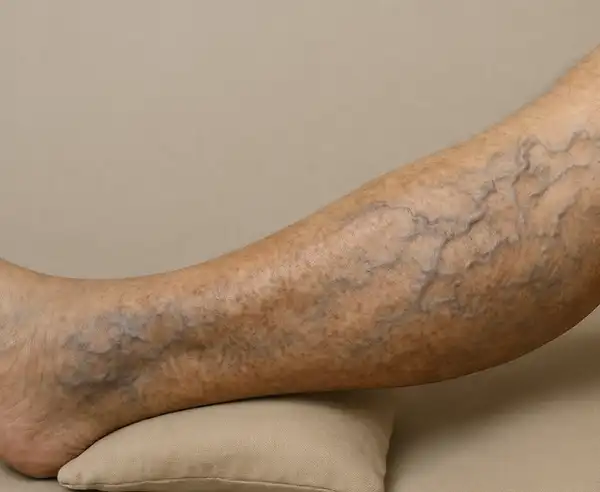
Home Remedies vs. Clinical Treatment: Where’s the Line?
Home treatments are excellent for early-stage CVI and for symptom relief, but advanced stages may require medical procedures that address the root of vein dysfunction. These options are outpatient, relatively low-risk, and continually evolving.
1. Ultrasound-Guided Sclerotherapy
A minimally invasive procedure where a sclerosant solution is injected into the vein under ultrasound guidance. The solution irritates the vein walls, causing them to collapse and stick together. Over time, the vein is reabsorbed by the body.
- Effectiveness: 8/10 for medium-sized varicose veins
- Average cost: $350–$800 per session
- What to expect: Performed in under 30 minutes; minimal discomfort; compression stockings worn afterward. Some patients may need 2–3 sessions.
2. Radiofrequency Ablation (RFA)
This technique uses heat generated by radio waves to close off damaged veins. A catheter is inserted into the vein and heat is applied to seal it shut.
- Effectiveness: 9/10 for larger veins
- Average cost: $1,500–$3,000 per leg
- What to expect: Local anesthesia, quick recovery, small incision. Most return to normal activity the same or next day. Bruising may occur.
3. VenaSeal Closure System
A modern, FDA-approved method that uses a medical adhesive to seal off the diseased vein. The glue is delivered via a catheter and hardens quickly, shutting the vein without heat or tumescent anesthesia.
- Effectiveness: 8.5/10
- Average cost: $3,000–$5,000 per leg
- What to expect: No compression required post-op; no major swelling or bruising. Ideal for people sensitive to heat-based procedures.
Always consult a vascular specialist before starting herbal remedies or if you notice skin changes, persistent swelling, or leg ulcers.
Table: At-a-Glance Remedies for CVI
| Remedy | Effectiveness (1–10) | Cost Estimate | Notes |
|---|---|---|---|
| Compression Stockings | 8.5 | $30–$100 | Most widely recommended |
| Leg Elevation | 7.0 | Free | Do multiple times daily |
| Exercise | 9.0 | Free | Walking is most effective |
| Anti-inflammatory Diet | 8.0 | Varies | Long-term benefit |
| Horse Chestnut Extract | 7.5 | $20–$40 | Use standardized supplement only |
| Hydration & Skin Care | 6.5 | Low | Helps prevent skin complications |
| Massage/Dry Brushing | 6.5 | Low–Moderate | Avoid on open wounds or clots |
Editorial Advice
Reyus Mammadli, healthcare advisor, recommends starting CVI home treatment as soon as early signs (like swelling or heaviness) appear. “Don’t wait for the veins to bulge — compression and movement can go a long way in stopping this from getting worse.”
He also advises keeping a daily log of leg symptoms, activities, and response to treatment. This simple habit helps both the patient and physician track what works.
CVI Patients Reporting Symptom Improvement After 4 Weeks of Home Care
The chart shows the percentage of CVI patients reporting symptom improvement after 4 weeks of home care based on the type of treatment used. Combination therapy (compression with elevation) had the highest reported success, while topical creams alone showed the lowest.
For patients with sedentary jobs, setting a reminder to stretch or take a short walk every hour can make a serious difference. Avoiding tight clothes and high heels is another simple yet effective strategy that’s often overlooked.
Finally, don’t fall for miracle creams or gimmicks. CVI isn’t cured overnight, but consistent care at home — when guided by medical advice — makes a world of difference. Small steps done daily beat big interventions postponed for years.
References
- Eberhardt RT, Raffetto JD. Chronic Venous Insufficiency. Circulation. 2014;130(4):333–346. doi:10.1161/CIRCULATIONAHA.113.006898
- U.S. National Library of Medicine – MedlinePlus. “Chronic venous insufficiency.” Available at: https://medlineplus.gov/ency/article/000203.htm
- National Heart, Lung, and Blood Institute. “What Is Chronic Venous Insufficiency?” Available at: https://www.nhlbi.nih.gov/health/chronic-venous-insufficiency
- Mayo Clinic. “Varicose veins – Diagnosis and treatment.” Available at: https://www.mayoclinic.org/diseases-conditions/varicose-veins/diagnosis-treatment/drc-20350647
- Healthline. “Horse Chestnut Extract for CVI.” Reviewed by Debra Rose Wilson, PhD, MSN, RN, IBCLC. Available at: https://www.healthline.com/health/horse-chestnut
- WebMD. “Home Remedies for Varicose Veins and CVI.” Available at: https://www.webmd.com/dvt/veins-varicose-home-care
- American Vein & Lymphatic Society. “Treatment Guidelines for CVI.” Available at: https://www.myavls.org
- O’Donnell TF Jr, et al. Management of venous leg ulcers: Clinical practice guidelines of the Society for Vascular Surgery® and the American Venous Forum. J Vasc Surg. 2014;60(2 Suppl):3S-59S.
About the Author
Reyus Mammadli is the author of this health blog since 2008. With a background in medical and biotechnical devices, he has over 15 years of experience working with medical literature and expert guidelines from WHO, CDC, Mayo Clinic, and others. His goal is to present clear, accurate health information for everyday readers — not as a substitute for medical advice.

